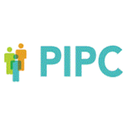
By Siri Vaeth, MSW
My daughter, Tess, lives with cystic fibrosis (CF). She is twenty-five years old. Not too long ago that would have been unimaginable for a CF patient. I’m so grateful for the medical advances that allow my child to have a full life.
 By: Carole Florman No one who works with or advocates for patients disagrees that drug prices in this country are too high. At CancerCare, an organization that provides free professional support services and information to people affected by cancer, we disagree with the article’s premise that the answer is either out of control prices or ICER’s fundamentally flawed assessment process that discriminates against patients, people with disabilities, and older people. 
By: Elizabeth Franklin
The use of the quality adjusted life year, or QALY, is widespread in research, health economics, and value assessment. However, the QALY is not without controversy as has been noted many times in the PIPC blog. Health economics and outcomes researchers, policy makers, and advocates have long debated the appropriateness and ethics of the QALY. Governmental agencies, managed care organizations, and healthcare payers routinely utilize the QALY in their decision making. However, one voice that has been glaringly absent from this debate is the most important voice: patients. 
By Rosie Bartel
Nine years ago, I had a routine knee replacement surgery. Instead of recovering and getting back on my feet, however, I contracted a surgical infection which took my right leg, hip, and part of my pelvic bone. My doctors told me I should have died. One said I had just a 30 percent chance of survival. But I’m a fighter. My life changed, and I am now confined to a wheelchair — but my passion for life didn’t change. I began fighting for the rights of people like myself and it has been the most meaningful work of my life. PIPC Patient Blog: Formulary Restrictions Devalue And Endanger The Lives Of Disabled People10/31/2018

This was originally published as an October 29, 2018 post in Health Affairs Blog.
By Ari Ne'eman As policymakers around the world seek to manage rising drug expenditures, people with disabilities find ourselves increasingly concerned by the potential harms that cost-cutting measures may bring. The growing fight between health care purchasers and drug manufacturers offers yet another instance where people with disabilities and chronic conditions may find themselves caught in the cross-fire.  This post was originally published as a July 17, 2018 article in Disabled World. By: Stephanie Bozarth Should one consider the life of a person with a disability less valuable than the life of a person without a disability? Alarmingly, states are increasingly relying on policies that do just that, in order to determine the value of health care services and treatments. For children suffering from life-threatening and debilitating disorders, like my daughter, reliance on any standard that considers her life less valuable than someone without a disability, is simply unacceptable.  This post was originally published as a May 15, 2018 op-ed in Morning Consult. By: Philip Gattone As the Epilepsy Foundation maintains focus on preserving patient access to potentially life-saving medications, we were alarmed at a recent proposal in the White House budget that would allow states to alter their Medicaid drug plans to exclude certain medications.  By: Janni Lehrer-Stein A 10-year-old girl sees her mother’s face for the first time. An 11-year-old boy races through the aisles of Target, marveling at toys he never knew existed. Both children had mere glimmers of vision, and were destined to lose even that because of an inherited eye disease with no treatment or cure. But thanks to the miracles of modern-day medicine, what was once only possible in science fiction novels is now becoming reality.  By: Janni Lehrer-Stein I learned recently, many weeks after its early June announcement, that the Institute for Clinical Economic Review (ICER) based in Boston will develop a report assessing the cost effectiveness of a new cure for blindness, a gene therapy for vision loss associated with a form of retinal disease. By the time I learned about it, the comment period had closed to allow stakeholders to share key information relevant to the first phase of development of the evidence report. While ICER said it would contact key patient groups and clinical experts to gain further insights on the patient perspective and clinical context of this new treatment option, I had never heard about it when I could have had a voice in the initial phase of the study. It’s not clear how hard they worked to get the patient perspective, and I certainly have a perspective to share |
Topics
All
Archives
July 2024
|





